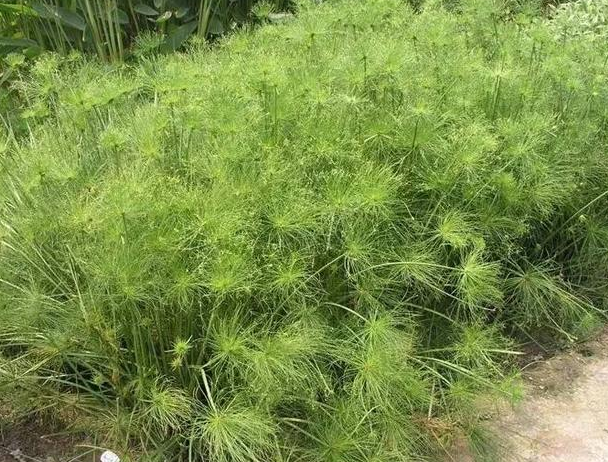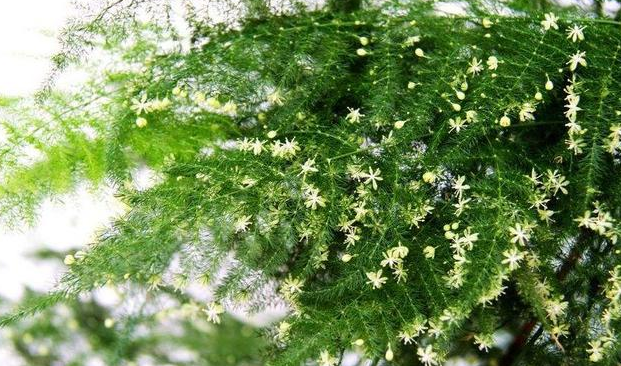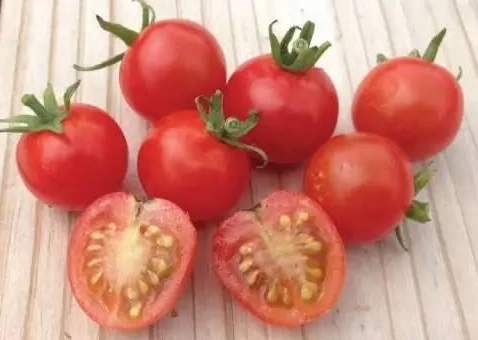What are the papyrus, Phoenix and lotus plants that can be blown up by water?
Plants, which are loved by many people, especially those raised by water, are super simple and easy to survive. What are the plants that can burst into pots?

1. Papyrus
Papyrus has many similar varieties, some of which are weeds in the field, but it is a good ornamental plant, and it is suitable for planting in the yard, suitable for soil cultivation or planting in water, and is simple to maintain. it only needs to keep the perennial temperature above 5 degrees, the maintenance environment is warm and moist, and the ventilation is good.
2. Water hyacinth
Eichhornia crassipes is a kind of foliage and flowering plant, which was a private ornamental plant for aristocrats in the Qing Dynasty. before, it was flooded because it was used to improve water quality, and many people still had a shadow over it. In fact, its ornamental nature is good, with swollen roots, green leaves, with beautiful flowers.
Maintenance needs to maintain an environment of more than 10 degrees all the year round, give ventilation and scattered light, and live with water.
3. Daishi
Dazhu, also known as "hibiscus lotus", its leaf shape looks like a peony flower, elegant, suitable for pot conservation.
Maintenance of the environment needs to maintain a temperature of more than 7 degrees, give ventilation and scattered light to the environment, and maintain a certain degree of environmental humidity.
4. Copper grass
Rabdosia angustifolia is a kind of amphibious foliage plant. As long as there is a tuber about 5 cm long, it can be thrown directly into the water. It can grow into a new plant in less than 3 days if it is given sufficient scattered light and ventilation in a place above 15 degrees.
Maintain the environment above 5 degrees, keep enough scattered light, and it can keep growing all the time.
This is the end of the introduction of water-raised plants that can burst into pots, so hurry up to have one at home.
Can water hyacinth be cultivated in pots at home? Elaeagnus angustifolia, also known as water hyacinth, has short and thin root hairs on its fleshy roots, which can not only be shallowly stuck in underwater soil, but also float and grow in deep water. The underwater part of the plant has horizontal stolons, which can spread by itself and sprout new plants. The leaf stands upright and protrudes out of the water, and the petiole expands into an air sac + with the rise of the water level, the root hair can float upright from the soil. Scape solitary, with 6-12 flowers at the top of scape to form short spikes. The floret is purple-blue, with 6 petals, and the upper one is larger, with dark blue patches in the center, and bright yellow eye spots in the patches, hence the name Eichhornia crassipes. Elaeagnus angustifolia is suitable for growing in shallow water and still water, and the leaves and scape can protrude about 30 centimeters above the water surface, so it is suitable for water culture in a deep barrel-shaped cylinder basin. Every year in early spring, the mother plant that survives in winter is taken out, and the small buds that grow at the base of the mother plant are cut with roots. if you put it into a deep-water basin, you can naturally root and produce new leaves, float and grow in the water. Eichhornia crassipes like a warm climate, and the optimum water temperature is 18-23 ℃. Sufficient sunshine is needed during growth, and indoor furnishings can be moved into the room after flowering. Its natural reproduction ability is very strong, in the reservoirs in the south of the Yangtze River, a hyacinth can spread more than ten meters of water a year. Under pot conditions, the ability of natural reproduction will be greatly weakened, but it will also fill the whole basin. Its perennial root is afraid of freezing, so it should be moved into the room as soon as possible before winter. There should be no shortage of water in the basin, and the light should be seen as far as possible. What are the aquaculture methods of aquatic plants?
Many people have water plants in their homes and offices. Looking at these plants after work and life can relieve a lot of eye fatigue. So what are the hydroponic plants? Today, I'm going to tell you about the aquaculture plants and their breeding methods.
1. Rich bamboo
Liliaceae is an evergreen upright shrub, which is very suitable for indoor hydroponic flowers. The leaves of Fugui bamboo are green, the stems are straight and round like bamboo. Leaves ovate, apex pointed, petiole base clasping. It is a very shade-tolerant plant. It still grows well and is tall and strong under weak light conditions. Can be placed indoors for a long time to watch the leaves, do not need special maintenance, as long as there is enough water, it can grow vigorously. When hydroponic culture, the rich bamboo stem will be cut into small segments of more than 20 cm as cuttings in water, as long as the cuttings can be soaked in water, they can take root and survive.
2. Hanging orchid
Perennial evergreen persistent-rooted herbaceous flowers of the family Liliaceae having clusters of leaves linear with longitudinal yellow-and-white stripes on the margin or in the middle. In summer and autumn, slender, flexible and drooping stolons are drawn from the leaves, tender leaves and aerial roots germinate at the top or nodes, and white flowers bloom. The orchid can be raised in indoor water, which can not only purify the air, but also has the advantages of beautiful appearance and simple management. Dig out the potted orchid, go to the root soil, cut off the old root and rotten root, leave the fibrous root, put it in a container bottle, fill the bottle with water and flower nutrient solution, and let the root of the orchid grow in water.
3. Green pineapple
Araceae is a plant of the genus Colocasia, which belongs to climbing vines and foliage flowers. Sexual preference for warm, humid environment, rattan up to several meters long, internodes have air root, leaves will grow bigger and bigger, leaves each other, evergreen. The stem of the radish is soft and the leaves are delicate. Aquaculture is very simple, make sure to change the water every 2 to 3 days, with simple nutrients. Green pineapple has a high ornamental value, vine stem naturally drooping, not only can purify the air, but also make full use of the space, for the rigid cabinet to add lively lines, lively color.
4. Ivy
Araliaceae, ivy genus, is the most ideal indoor and outdoor vertical greening varieties, evergreen vines, thin and soft branches, aerial roots, climbing on other objects. The leaves are alternate, the leaves are triangular-ovate, and the demand for potted plants is increasing day by day. It is a typical negative plant, which can grow in full light, grow well in warm and humid climate, and is not resistant to cold. Water is easy to raise and has strong vitality.
5. Asparagus
Perennial evergreen herbaceous flowers of the genus Liliaceae. The stem is thin and weak, and the branches are slender and leafy, spreading horizontally. The flowers are small and white. Berries globose, black. After the fruit is ripe, it shows a little red in the thick green cluster, elegant and lovely. Plant strong negative tolerance, placed at the head of the bed, table case, elegant and generous, is a good indoor flower. Asparagus is also an ideal foil material for cut flowers. In recent years, water-raised asparagus has been successfully developed, which is even more elegant in the room.
6. Hyacinth
Also known as foreign daffodils, belongs to the hyacinth genus of Liliaceae, perennial herbs, bulb spherical or oblate, outer coat flag is purplish blue or white, etc., basal leaves, leaves thick, banded lanceolate. Flower stem extracted from the middle of the leaf stem, raceme, flower appearance delicate, colorful, dazzling, pleasant fragrance. Sex likes a sunny and cool and humid environment, which is not only suitable for potted plants, but also suitable for water culture. When raising water, put its bulb in the hydroponic nutrient solution, the appearance is clean, the ornamental is strong!
7. Evergreen flowers and leaves
Liliaceae, basal leaves thickly leathery, oblanceolate, broadly lanceolate or broad-band, 10mur40 cm long and 2.5 Mel 5.5 cm wide, apex acute, base long and narrow, with fibrous roots at nodes. Flowering stems short and thick, even inflorescences 4 Mel 8 cm long; terminal fleshy inflorescences long ellipsoid, flowers densely borne, sessile, yellowish, hemispherical. Rich in varieties, there are green leaves, mosaics and other types. Like the overcast and wet environment, put it in a shady place in summer to avoid strong light. Is a strong adaptation to ornamental flower varieties, usually pot ornamental, in recent years, more and more water-raised varieties, not only strong ornamental, but also can effectively clean indoor air pollution.
8. Mulong tongue for the millennium
Evergreen shrub of Orchidaceae. The stem is round and straight, the leaf is slender, the new leaf elongates upward, and the old leaf hangs. The leaves are green in the middle and purplish red stripes on the edges. Sex like high temperature and humidity, but also resistant to drought, shade, simple water culture, fashionable appearance.
9. Brazilian wood
The scientific name Xianglong blood tree, alias Brazilian iron tree, is a plant of the genus Liliaceae. Evergreen tree with neat plant shape and erect stem. The leaf cluster is born at the top of the stem, 40-90 cm long and 6-10 cm wide, the tip is slightly obtuse, curved into a bow, with bright yellow or milky stripes; the leaf margin is bright green, undulating and glossy. The flowers are small. Yellowish green, fragrant. The sex likes the environment with sufficient light, high temperature, high humidity, shade and dryness, and grows well in the bright scattered light and the dry environment of the northern bedroom. Brazilian wood is mostly propagated by cutting. As long as the temperature and other conditions are suitable, Brazilian wood can grow all the year round. it is a beautiful, regular and world-famous new generation of indoor foliage plants. In recent years, its hydroponic variety has developed rapidly, as long as it can grow normally with enough slow-release fertilizer, and it can be rotated in the living room, study and living room, with elegant style, simple style and strong appreciation.
10. Gerbera
Compositae perennial root herbs, large flower diameter, rich flowers and colors, often blooming all the year round. Like warm, sunny and well-ventilated environment, is a semi-cold-resistant flowers, like fertile and loose. African chrysanthemum is a good variety of cut flowers, which can be cultivated in water for a long time, highly ornamental, and good at absorbing formaldehyde. Water farming of these plants generally does not require special management. Containers with a certain volume for root expansion can be used, while glass containers with open mouth are more beneficial to maintaining water quality and root growth. When planting, you should avoid immersing the leaves in water so as not to cause decay; under suitable light conditions, you can quickly take root; when you find less water, add some water to prevent the root system from drying; when the water becomes dirty, take out the plant, clean the container, and rewater it. General water plants, three days to change the water, apply a nutrient solution, the proportion of the nutrient solution and how much depends on the size of the plant.
There are many water-raised plants, which are highly ornamental, beautiful and generous. Transparent glass bottles are placed in the living room, bedroom, balcony, study and courtyard and other places are very good decorations and handicrafts, which can not only add color to home life, but also highlight the unique taste of the host.
- Prev

How can asparagus blossom? what's the sign?
Asparagus, this is a small potted plant that many people like to breed. This asparagus is really super good-looking. How can asparagus blossom? What is the sign of asparagus flowering: how to raise asparagus to blossom: 1. Choose strong asparagus for more than 3 years, and apply sufficient base fertilizer when changing pots in early spring.
- Next

How do potted Little Tomato Seeds grow and bloom
Small tomato, this is a lot of people are super like, they can also grow small tomato at home, potted small tomato seeds how to grow? How tall does the baby tomato grow before it blossoms: prepare the seeds, if you can buy organic cherry tomatoes, and not the kind of cherry tomatoes that have been crossed many times.
Related
- Fuxing push coffee new agricultural production and marketing class: lack of small-scale processing plants
- Jujube rice field leisure farm deep ploughing Yilan for five years to create a space for organic food and play
- Nongyu Farm-A trial of organic papaya for brave women with advanced technology
- Four points for attention in the prevention and control of diseases and insect pests of edible fungi
- How to add nutrient solution to Edible Fungi
- Is there any good way to control edible fungus mites?
- Open Inoculation Technology of Edible Fungi
- Is there any clever way to use fertilizer for edible fungus in winter?
- What agents are used to kill the pathogens of edible fungi in the mushroom shed?
- Rapid drying of Edible Fungi

